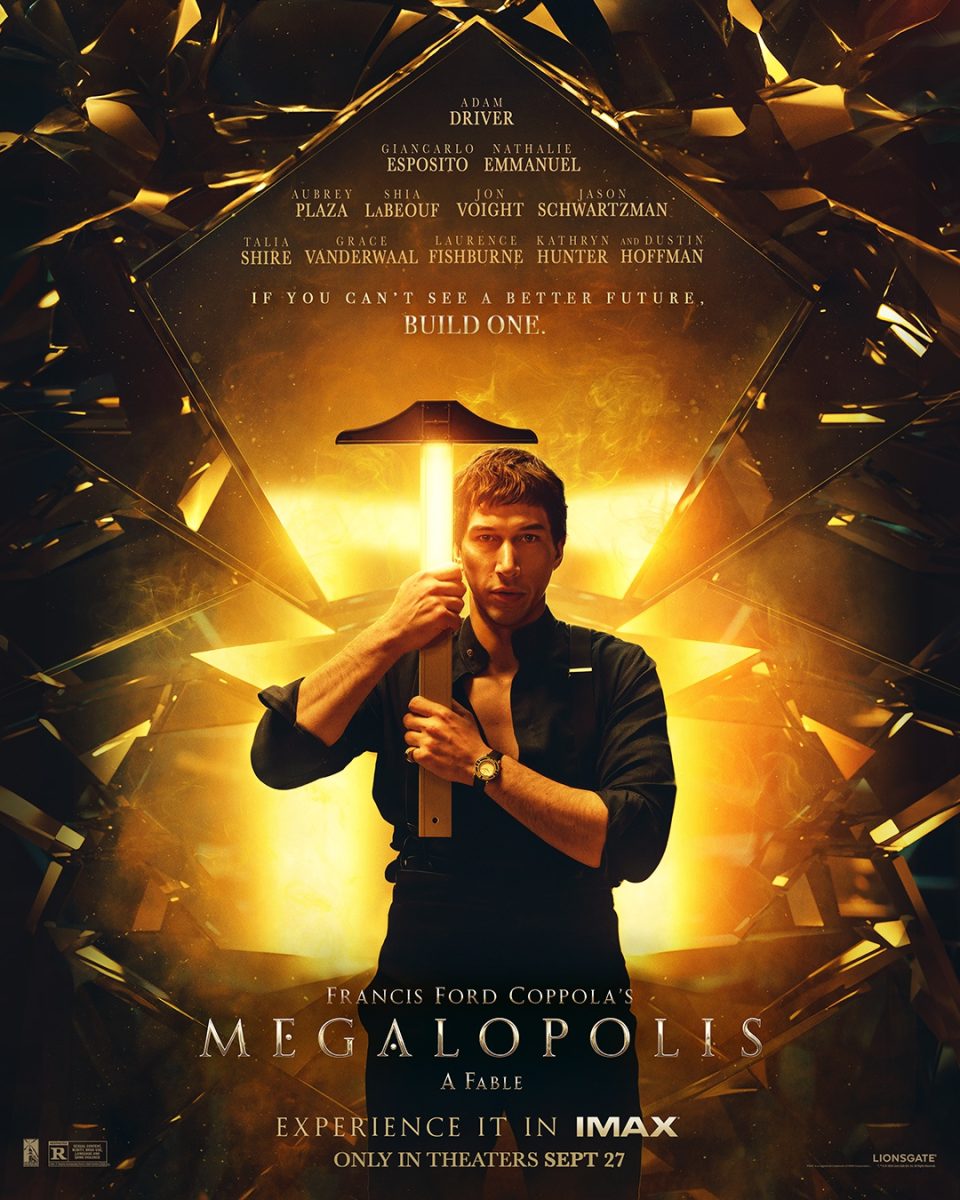Five-time academy award-winning director, Francis Ford Coppola released his passion project, “Megalopolis,” after 40 years of circulating the idea. The movie premiered on Sept. 27 and was funded by Coppola himself. This sci-fi/thriller dives into heavy topics like politics and grief, but it struggles to fully develop any of those ideas leading to an unorganized and chaotic film.
Audiences who hopefully approach the theater will soon be left disappointed by Coppola’s movie falling flat. The worst part is that fans know Coppola is capable of making an incredible movie just like he has in the past with films like “The Outsiders,” “Apocalypse Now,” and “The Godfather” trilogy. All these movies are recognized for their outstanding plot, making “Megalopolis” out of place as its plot fails to compare to his other successes regarding its narrative clarity.
The movie illustrates the life of Cesar Catilina, an architect who battles for a utopian world through his invention, Megalopolis. Though that is the main focus, there is also conflict between Catilina and the mayor, Cicero, as they battle over this creation. Additionally, drama intertwines itself into the Catilina family as Catilina’s cousin fight for a spot in his wealthy uncle’s will. Coppola, adding more confusion to the mix, then decides to add Catalina having the ability to stop time, his wife dying, and him being accused of the death.
Kind of a lot right?
Given the amount of components in this movie, there is just no time for everything to be fully explained and well represented. This outcome is disappointing as there are good plot points, like the conflict between Cicero and Catilina. However, this dispute is weakly discussed in the film as the movie needed to give screen time to all the other elements.
Even though the setting is New York, the primary location is constantly referred to as a “New Rome,” a descriptor trying to create a classy yet industry feel. Yet, to make this setting apparent, there needs to be good editing and visuals to create a well-built, Rome-like atmosphere. The movie misses its mark on this. The CGI is poor and looks like it was taken out of a low-budget movie, the yellow hue lighting couldn’t decide if it was going to be in your face or barely apparent, and the backdrops and props were barely focused on, making the whole film’s technical aspects absent.
Just like the film’s plot and visuals, the script writing was just as bad. The dialogue was awkward at best as it tried to play with humorous and depressing tones all at once. Character traits were all over the place and barely consistent. Catalina was painted as a dark, twisted architect who only cares for himself but was also shown as this caring man who has greater, kinder intentions. This left the talented cast, with actors like Adam Driver, Aubrey Plaza, and Giancarlo Esposito, little to nothing to go off of.
Coppola, if anything, tried to relive his glory days of “The Godfather” with weak suspenseful moments and corny one-liners, trying his best to lead viewers to the end of their seats. To give him some credit, this does make audiences edge closer to their seats, but just so they can have a quick exit once the credits start rolling.
In all, if Coppola just cut some ideas out and gave more time to other ideas instead of snipits to every component, the film could have had a better outcome. But for the renowned director, it is a bit too late to draw this out further. As “Megalopolis” is sure to be laughed at by critics, audiences should avoid the 40 year build-up for viewing a passion project that just has too much passion.



